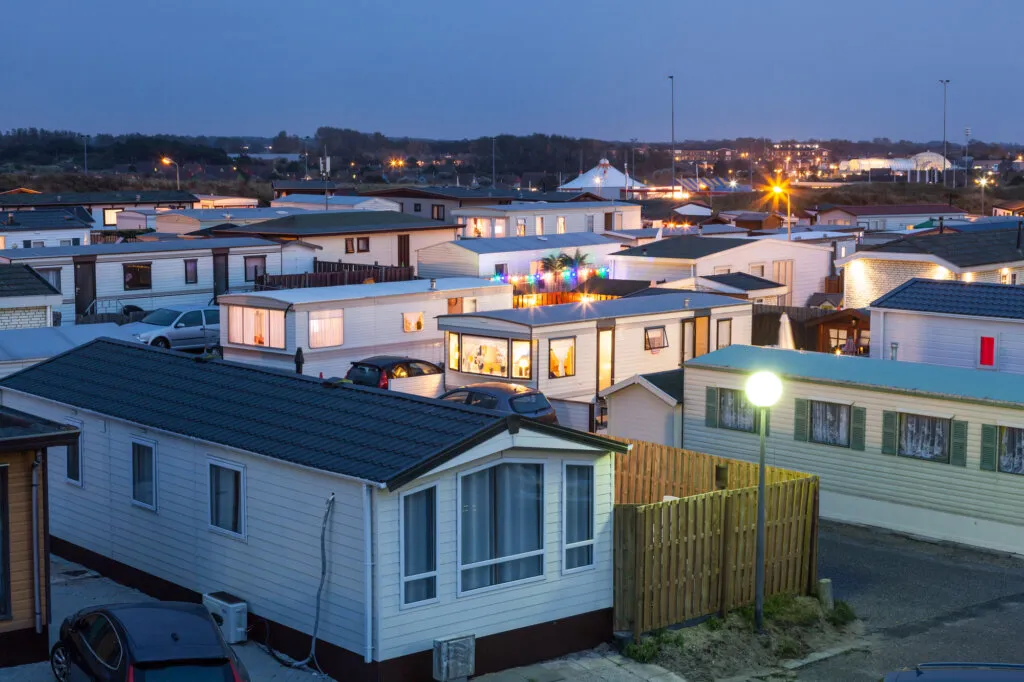In 2021, some predictions that manufactured housing could outperform the general market, and now, in 2023, we’re here to assess whether those forecasts have come true. To gain insights into the current state of the manufactured housing market, we’ve gathered the latest updates from MHD’s manufactured housing team. In this article, we’ll explore various aspects of this thriving sector, including occupancy rates, supply chain challenges, increasing demand, and the role of property management software.

Mobile Home Park, also called “Trailer Park” in Florida
Occupancy Rates and Rent Highs
Manufactured housing has been mirroring the performance of the broader residential market across the continental United States. In November 2022, occupancy rates reached a record high of 95.4%, and average monthly rents also hit an all-time high of $800. These milestones can be attributed to a housing shortage, as many individuals prefer to own their homes rather than rent. Unlike traditional single-family homes, manufactured homes can be built in a matter of days, thanks to the efficiency of the manufacturing process.
Supply Chain Challenges
Manufactured housing, like many other industries, has been affected by supply chain disruptions. These disruptions have led to increased production costs and upward pricing pressure. However, despite these challenges, manufactured housing production has increased for the fifth consecutive month, primarily due to streamlining product offerings and expanding operations. Manufactured home builders in the U.S. benefit from their scale, which grants them better access to supplies and materials than smaller homebuilders. They also adapt to supply chain issues by frequently changing the appliances they install. While supply chain challenges are present, manufactured housing has still performed better than the general residential market.
Increasing Demand
The demand for manufactured housing continues to rise. Although there was a decrease in the number of new manufactured communities built in recent years, the demand has remained strong. Many operators, particularly in the Sun Belt, are still developing new communities to meet this demand. However, the challenge lies in getting new homes to the market as quickly as they are needed.
Challenges in Getting New Homes to Market
The fundamental issue is one of supply and demand. The demand for manufactured homes has outpaced supply, leading to challenges related to materials and supply chain issues. Operators prefer to have a home on every available lot, but they face difficulties in obtaining new homes quickly. This shortage has led to record-high prices for the homes that are available. The cost of setting up these homes has also increased due to rising labor costs and transportation expenses, making new manufactured homes more expensive compared to a few years ago.
Finding Short-Term Success
Some manufacturers are cautious about scaling up their plant operations too quickly. While more manufacturing facilities came online in 2021, challenges persist in terms of transportation costs. Facilities need to be strategically located to reduce the cost of transporting homes to their final destinations. Despite these challenges, it’s clear that the demand for manufactured housing remains strong.
Stereotypes and Private Equity
The manufactured housing industry has undergone consolidation, with private equity playing a significant role. While private equity investment can lead to rent increases and the displacement of some residents, it can also have positive effects. Private equity can lead to investments in communities, resulting in improved amenities and the overall appearance of these communities. Some operators have realized the opportunity to enhance their communities through investments, making them more desirable places to live.
The Bright Future of Manufactured Housing
The future of manufactured housing looks promising, with a move toward advanced technology and better maintenance. Operators who bring in new homes can benefit from reduced maintenance costs and even opt to sell these homes rather than rent them. Homeownership in manufactured housing communities fosters a sense of pride and allows operators to introduce amenities that enhance the community’s appeal.
Property Management Software
As the industry evolves, property management software becomes increasingly important. Smaller operators have traditionally relied on spreadsheets and various tools, but a shift is occurring in the application delivery space. Property management software offers data-driven insights that help operators make informed decisions regarding rent increases, capital spending, and various other aspects of community management.
The Bottom Line
The manufactured housing market continues to thrive in 2022, despite supply chain challenges and rising costs. The demand for manufactured homes remains strong, and private equity investment has the potential to improve communities while also raising some concerns. As the industry moves forward, advanced technology and property management software will play a crucial role in optimizing operations and enhancing the overall quality of manufactured housing communities. The future looks bright for this resilient and dynamic sector.

